How to Clean A Snorkel Mask in 7 Steps
Learn the easy steps to clean your snorkel mask for crystal-clear underwater views.
You're floating above a colorful coral reef. Bright fish swim around you, and sunlight filters through the water. It's perfect—until your mask fogs up, and the amazing view turns blurry. Frustrating, right? Keeping your snorkel mask clean and clear is key for a fun underwater experience. In this guide, we'll show you how to care for your mask so every snorkel trip is as great as the first.
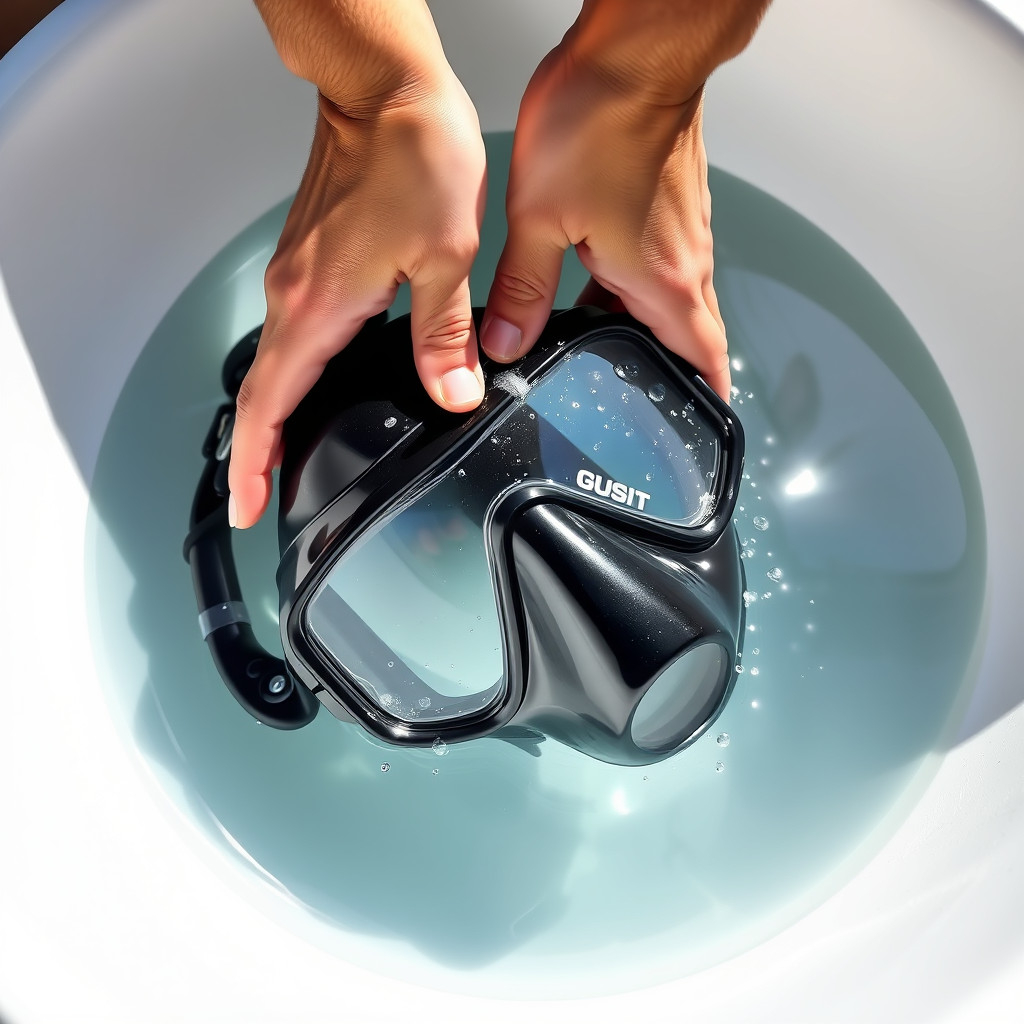
Introduction
Snorkeling lets you explore the world underwater. How clear your mask is can make a big difference. A clean mask lets you enjoy the beauty beneath the sea without distractions. But a dirty or foggy mask can ruin your fun.
Whether you're going on a tropical vacation or visiting the local beach, knowing how to clean and care for your snorkel mask will make your time in the water better. In this guide, we'll show you how to keep your mask in great shape, so you have clear views every time.
Why Cleaning Your Snorkel Mask Matters
Why keep your snorkel mask clean? Masks can gather salt, sand, sunscreen, and even bacteria. These can cloud your view, irritate your skin, and damage the mask. Cleaning your mask regularly improves vision and helps your gear last longer.
A clear mask helps with safety, too. Being able to see obstacles, marine life, and signals from other snorkelers helps prevent accidents. Plus, a clean mask is more comfortable to wear and less likely to leak or fog up.
Know Your Snorkel Mask Parts
Before we get to cleaning, it's good to know the parts of your snorkel mask:
Lens: Usually made from tempered glass or plastic; it provides a clear view.
Skirt: The soft, flexible part (often silicone) that seals against your face.
Frame: Holds the lens and skirt together.
Strap: Keeps the mask snug on your head.
Buckles: Let you adjust the fit.
Each part needs care to work well and last a long time.
Materials You'll Need
Cleaning your snorkel mask doesn't require fancy equipment. Here's what you'll need:
Warm freshwater: Great for dissolving salt crystals and loosening debris.
Mild dish soap or non-abrasive toothpaste: Removes oils and residues without scratching.
Soft cloth or microfiber towel: Good for wiping surfaces without leaving lint.
Soft-bristle toothbrush: Helps clean hard-to-reach areas like grooves.
White vinegar (optional): A natural disinfectant for deeper cleaning.
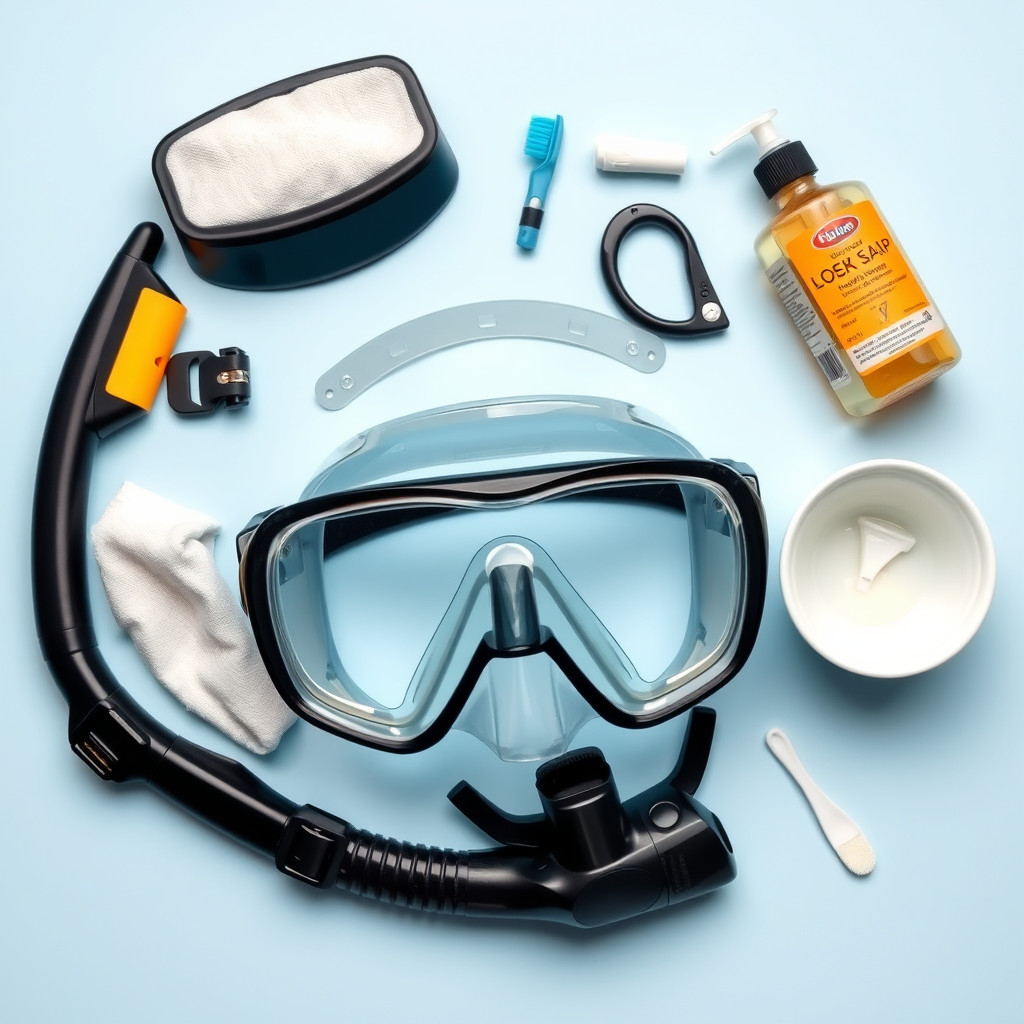
Step-by-Step Guide to Cleaning Your Snorkel Mask
1. Rinse Right After Use
As soon as you're out of the water, give your mask a good rinse with fresh water. This washes away salt, sand, and any stuff that might stick to the mask. Salt crystals can be sharp and might scratch the lens if not removed quickly.
2. Soak in Warm, Soapy Water
Fill a basin or sink with warm water and add a few drops of mild dish soap. Submerge your mask and let it soak for about 15 to 20 minutes. The warm, soapy water helps break down oils from your skin and sunscreen that can stick to the mask.
3. Gently Scrub the Mask
After soaking, use your fingers or a soft cloth to gently scrub all surfaces of the mask. Pay special attention to the skirt, as this area often collects oils and residues that can affect the seal against your face. Use the soft-bristle toothbrush to clean around the frame, buckles, and any textured areas.
4. Rinse Thoroughly
Once you've scrubbed the mask, rinse it under running water to remove all soap. Make sure no suds remain, as leftover soap can cause irritation and make the mask fog up.
5. Disinfect with Vinegar (Optional)
For extra cleanliness, especially if the mask hasn't been cleaned in a while, you can use a vinegar solution. Mix equal parts white vinegar and water, and soak the mask for about 10 minutes. Vinegar is a natural disinfectant and can help remove any lingering bacteria or mold.
6. Rinse Again
After the vinegar soak, rinse the mask thoroughly with fresh water to remove any vinegar smell and taste. Make sure all traces of vinegar are gone, as the acidity can be harsh on the mask materials if left on.
7. Dry Completely
Shake off excess water, then use a soft, lint-free towel to pat the mask dry. Avoid rubbing hard, as this can scratch the lens. Let the mask air dry completely in a cool, shaded area. Make sure it's fully dry before storing to prevent mold and mildew growth.
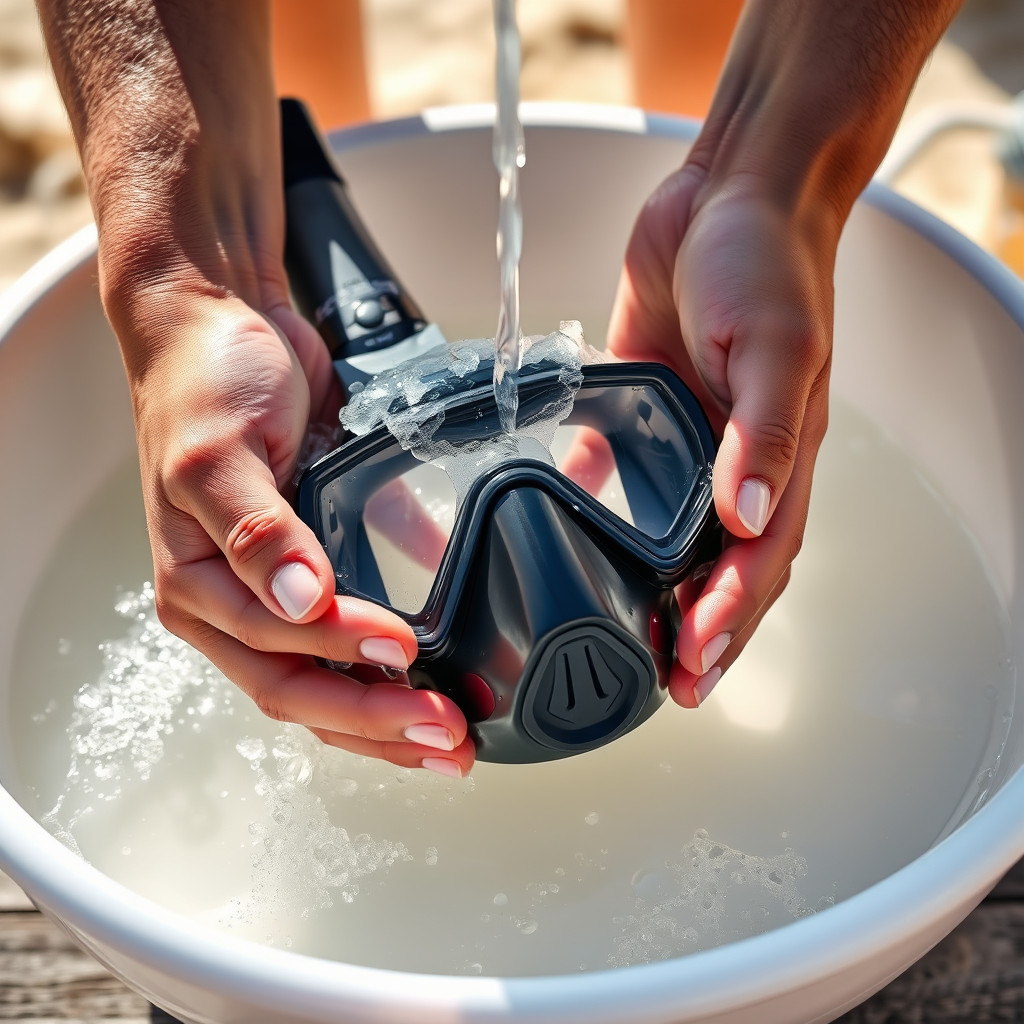
Tips for Preventing Fogging
Fogging is a common issue that can ruin your snorkeling experience. Here are some tried-and-true methods to keep your mask clear:
Pre-Treat with Toothpaste:
For new masks, applying a thin layer of non-abrasive toothpaste to the inside of the lens can help remove the thin layer of protective silicone left from the manufacturing process.
Gently rub the toothpaste onto the lens with your fingers, then rinse thoroughly.
Use Anti-Fog Solutions:
Commercial anti-fog sprays and gels are available and can be very effective.
Apply according to the product instructions before each snorkeling session.
DIY Spit Trick:
If you don't have any anti-fog solution handy, a quick fix is to spit on the inside of the lens.
Spread it around evenly, then rinse lightly. It might sound odd, but many snorkelers swear by this method.
Don't Touch the Inside of the Lens:
Oils from your fingers can contribute to fogging.
Try to handle the mask by the edges or outside.
Storing Your Snorkel Mask
Proper storage keeps your mask in good shape. Here are some storage tips:
Use a Protective Case:
Store your mask in a hard or padded case to prevent scratches and damage.
Cases also protect the mask from dust and dirt.
Keep Away from Direct Sunlight:
Long exposure to sunlight can degrade the silicone and plastic parts.
Store the mask in a cool, dry place out of the sun.
Avoid Storing Near Chemicals:
Fumes from household cleaners, gasoline, or insect repellents can damage the mask materials.
Keep the mask away from such substances.
Don't Stack Heavy Items on Top:
Placing heavy objects on your mask can deform the frame or skirt.
Store it somewhere it won't get squished.
Caring for the Mask Strap and Buckles
Often overlooked, the strap and buckles are crucial for a good fit. Here's how to care for them:
Rinse and Check:
After each use, rinse the strap and buckles to remove salt and sand.
Look for signs of wear or cracks.
Adjust Gently:
When adjusting the strap, avoid yanking or pulling too hard.
Gentle adjustments help the parts last longer.
Replace Worn Straps:
If the strap shows signs of wear or doesn't stretch well, consider replacing it.
Many masks let you replace the strap without buying a whole new mask.
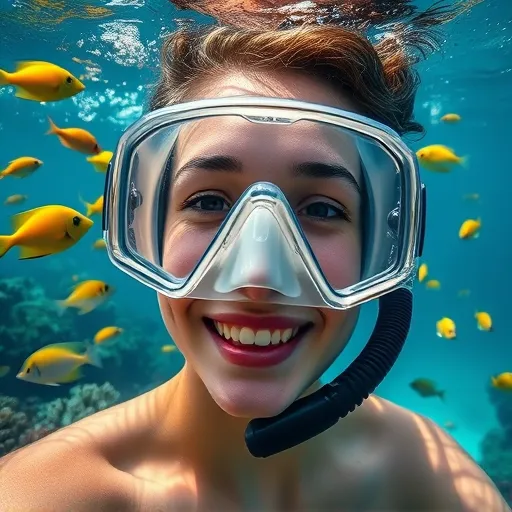
Dealing with Scratches on the Lens
Scratches can mess up your view and cause distortion. To avoid scratches:
Handle with Care:
Always lay your mask lens-side up when placing it on a surface.
Avoid tossing it into bags with other gear.
Use Lens Protectors:
Protective films or covers can be applied to the lens.
They help prevent scratches and can be replaced when worn.
Use Soft Cleaning Cloths:
Use only soft, non-abrasive cloths for wiping the lens.
Microfiber cloths designed for eyewear are ideal.
When to Replace Your Snorkel Mask
Even with good care, masks eventually need replacing. Here's when to think about getting a new one:
Persistent Fogging or Leaking:
If cleaning and anti-fog treatments don't help, the mask may be worn out.
Cracks or Tears:
Any damage to the lens, skirt, or frame can compromise safety.
Discolored or Hardened Silicone:
Over time, silicone can yellow and lose its stretchiness.
Poor Fit:
Changes in your face or wear on the mask can affect the seal.
Eco-Friendly Cleaning Options
If you want to minimize environmental impact, try these natural cleaning methods:
Vinegar Solution:
As mentioned earlier, a mix of white vinegar and water disinfects without harsh chemicals.
Baking Soda Paste:
Mix baking soda and water to make a paste.
Gently apply it to the mask to remove stubborn residues.
Natural Soap:
Use biodegradable, fragrance-free soaps to reduce chemical runoff into waterways.
Additional Maintenance Tips
Avoid Spraying Sunscreen While Wearing the Mask:
Chemicals in sunscreen can damage the mask materials.
Apply sunscreen before putting on your mask.
Check for Mold or Mildew:
If the mask wasn't dried properly, mold can grow.
Clean with vinegar and let it dry completely.
Stay Ahead of Problems:
Regular maintenance prevents small issues from becoming big ones.
Set aside time after each trip to care for your gear.
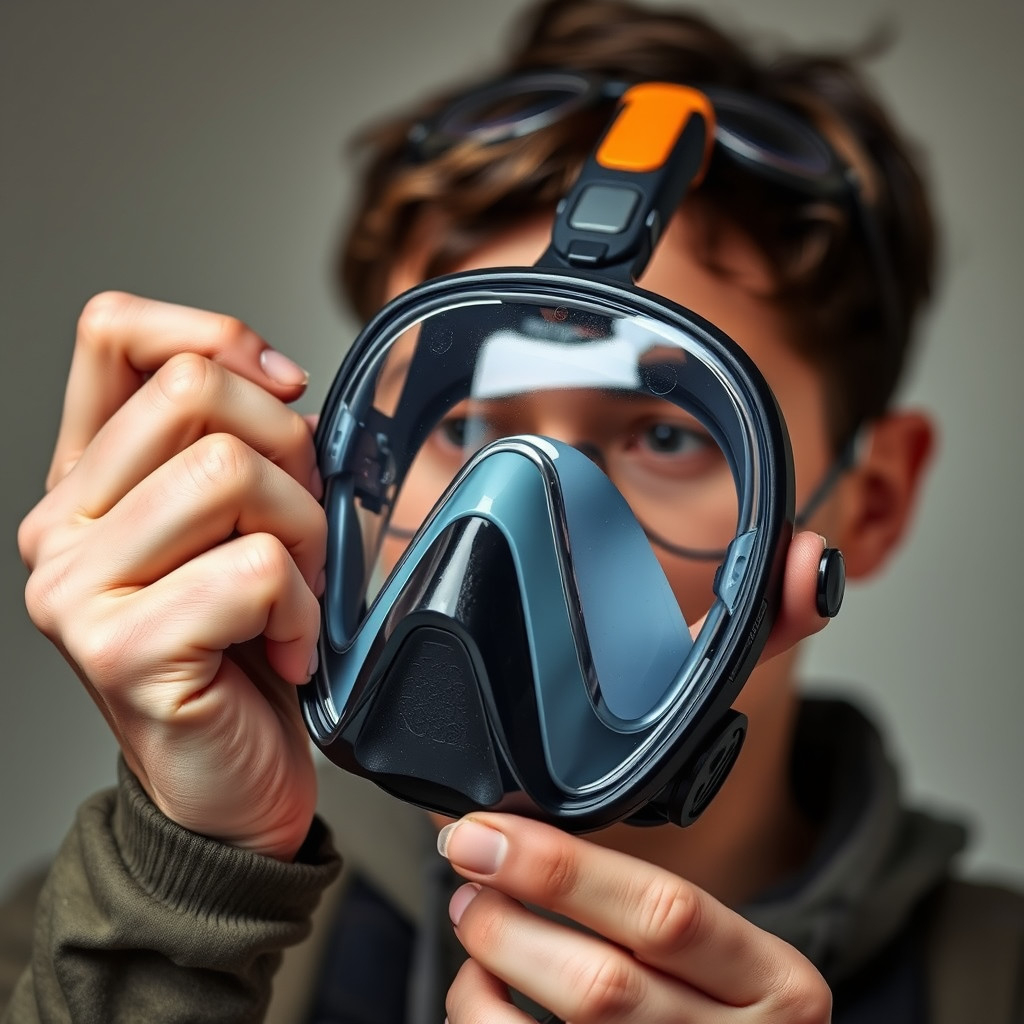
Common Mistakes to Avoid
To keep your mask in the best condition, avoid these pitfalls:
Using Abrasive Cleaners:
Scouring powders or rough pads can scratch the lens and damage the skirt.
Cleaning with Hot Water:
Very hot water can warp the mask or weaken adhesives.
Leaving the Mask in Hot Car Trunks:
Temperatures inside cars can get extremely high, affecting the mask's integrity.
Ignoring Manufacturer's Instructions:
Always follow guidelines provided with your mask for cleaning and care.
Conclusion
Taking good care of your snorkel mask means you're always ready to explore the wonders under the sea. Regular cleaning, proper storage, and maintenance not only make your underwater adventures better but also help your gear last longer. By following the steps in this guide, you'll keep your mask clear, comfortable, and reliable.
Next time you gear up for a snorkeling trip, you'll know your mask won't let you down. Dive in with confidence, and enjoy the amazing sights that await you.
FAQ
Can I use regular toothpaste to clean my mask?
Yes, but make sure it's a plain, non-abrasive paste. Gel toothpastes and those with whitening agents or microbeads can scratch or leave residues.
How often should I clean my snorkel mask?
Ideally, rinse the mask after each use and do a thorough cleaning at the end of each day of snorkeling or diving.
Is it okay to share snorkel masks with others?
Sharing masks isn't recommended due to hygiene concerns. If you need to share, make sure to clean and disinfect the mask thoroughly between users.
Can I put my snorkel mask in the dishwasher?
No, dishwashers can be too harsh. The high temperatures and detergents may damage the mask materials.
What's the best way to defog my mask while in the water?
If your mask starts to fog up, you can briefly lift it to let a small amount of water in. Swish the water around the lens to clear the fog, then tilt your head back and let the water drain out by pressing the top of the mask against your forehead.
Are there masks that are less prone to fogging?
Some masks come with pre-treated lenses or are made with materials that resist fogging. However, proper cleaning and maintenance are still necessary.
Can scratches on the lens be repaired?
Minor scratches might be lessened with special lens polishing kits, but deep scratches usually can't be fixed. In such cases, replacing the mask is the best option.
Is baby shampoo effective as an anti-fog solution?
Yes, a drop of baby shampoo rubbed onto the inside of the lens and rinsed lightly can act as an anti-fog treatment. It's gentle and less irritating to the eyes.

I'm a scuba enthusiast, and marine life lover. I enjoy writing about my diving adventures and sharing my knowledge with others.

I'm a passionate scuba diver and love to share my experiences with you. I enjoy writing about my experiences and sharing my knowledge with others.